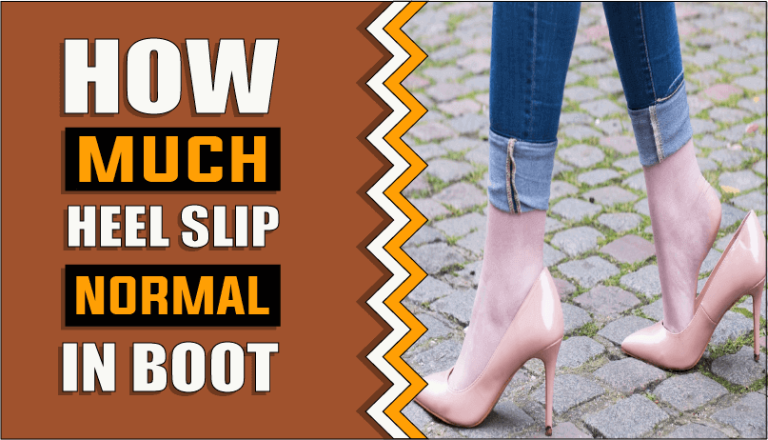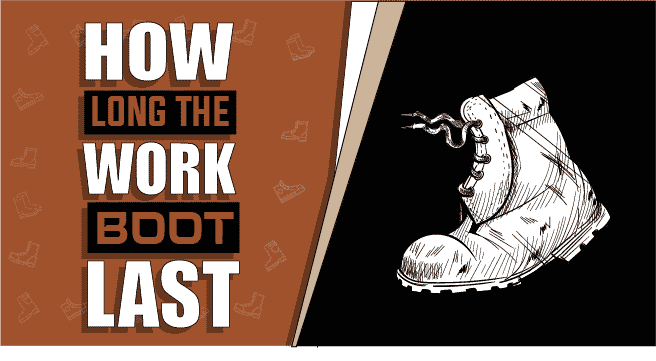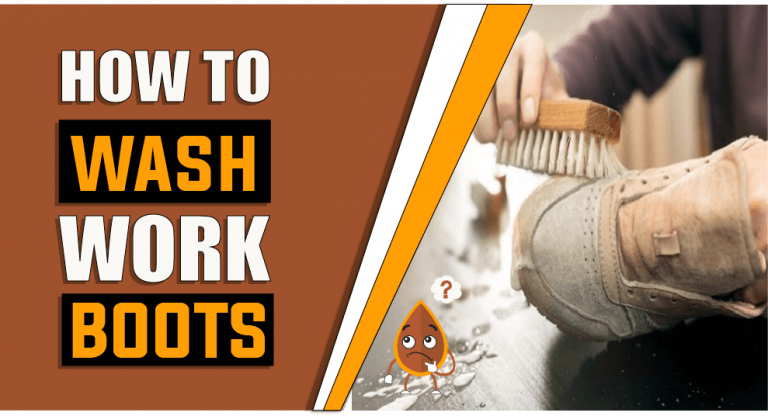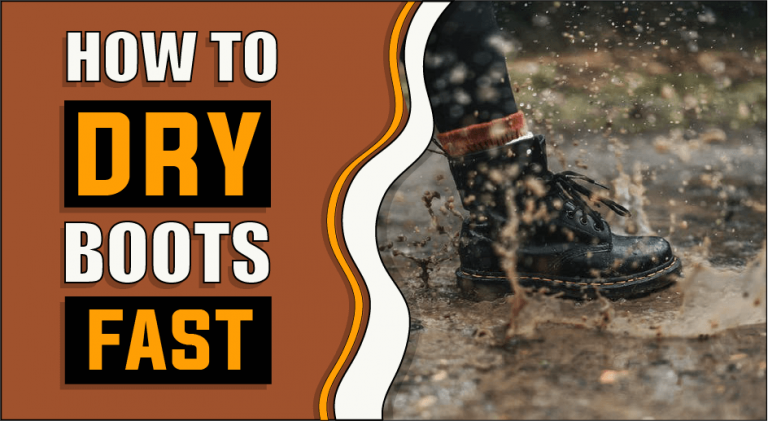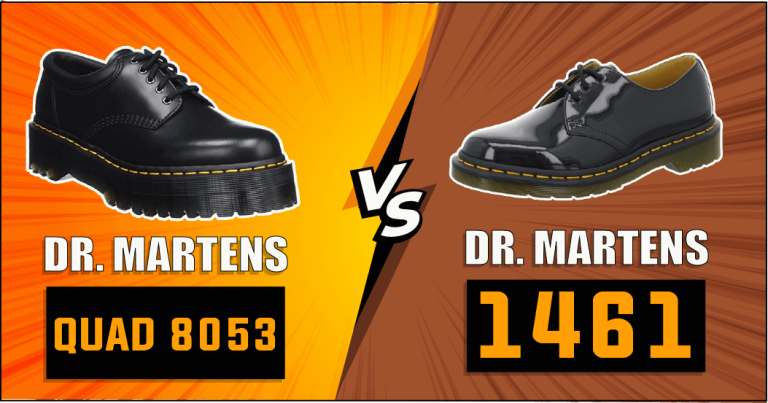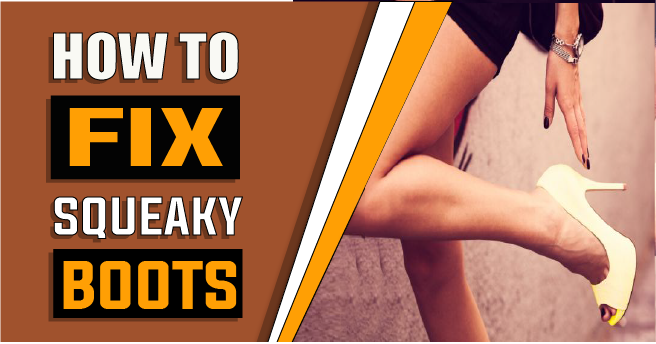How To Break In Steel Toe Boots – 5 Effective Ways
Wearing steel-toe boots can provide an added layer of protection when you’re in a hazardous work environment, but if your new pair of boots need to be broken in, it can sometimes be tricky. Breaking in steel-toe boots doesn’t have to be a dreaded or uncomfortable task as long as you take the correct steps. Before embarking on any rigorous activities while wearing them they must be broken in properly first so that they feel comfortable and secure on your feet. In this blog post, we will discuss exactly how to break in your new steel-toe boots quickly and easily so you can get back out there safely. Read on as we dive into just exactly how to break in steel-toe boots!

Let’s explore 5 methods of how to break in steel-toe boots
Boots with a steel toe are the perfect choice for those who work in professions where safety and protection from impact are key. They are incredibly durable and can last for years with proper maintenance. However, if you’ve recently purchased a pair of steel-toe boots and they’re still too stiff and uncomfortable, here are a few methods you can use to break them in.
Method 1: Wearing Socks with Steel-Toe Boots
This is the simplest method. You’ll need to wear a pair of socks with your steel-toe boots to help break them in. The socks act as an extra layer between your foot and the boot and help to reduce the discomfort associated with wearing them. This method is most effective when you go for a short walk or jog around your neighborhood, slowly increasing the distance and length of time spent in your boots. Thinner socks work best for this method, as thicker socks may make the boots more uncomfortable.
Method 2: Inserting Insoles into Steel-Toe Boots
Adding insoles to your steel-toe boots is another way to break them in. Not only do insoles add extra cushioning and support, but they can also help to shape your boots to the shape of your feet. If you opt for this method, make sure the insoles are made from breathable materials and specifically designed for work boots. They should also provide the necessary arch support for your feet. Before adding insoles, make sure to check that they fit well inside the boots. If they’re too big, they can make your feet feel uncomfortable and cause blisters.
Method 3: Applying Boot Softener to Steel-Toe Boots
This method involves using a boot softener, such as mink oil or leather conditioner, to break in your steel-toe boots. Before applying the boot softener, make sure to clean your boots with a damp cloth so that the product can penetrate through any dirt or grease that may have accumulated. Applying the softener regularly can help to keep your boots comfortable and provide extra protection against minor wear and tear. This method should typically be done every two weeks or so. If you’re looking for a more natural approach, you can also use petroleum jelly or lanolin to soften the leather. They may not be as effective as commercial softeners, but they can still help to break in your boots.
Method 4: Heating Steel-Toe Boots
The most common method of breaking in steel-toe boots is to heat them. This can be done using a hair dryer, or by submerging them in hot water for a few minutes. The heat will cause the leather to become softer and more pliable, making it easier for your foot to move around inside the boot. However, make sure to avoid direct contact with the heat source, as this could damage or even melt the leather. They should only be exposed to heat for a few minutes and should never be left unattended. This is a great way to get steel-toe boots molded to your feet quickly and comfortably.
Method 5: Wearing Steel-Toe Boots Every Day
The most effective way to break in your steel-toe boots is to wear them regularly. This will require some patience and dedication, but it’s the best way to ensure that your boots will fit comfortably after a few weeks of use. Start by wearing your boots for short periods and gradually increase the length of time spent in them as they become more comfortable. Doing this will help to shape your boots to the unique contours of your feet. This method is especially effective if you work in a profession that requires the use of steel-toe boots daily. But even if you don’t, wearing them as often as possible will make a difference over time. Wearing them to work, or on errands, is a great way to break them in.
With these 5 methods on how to break in steel-toe boots, you’ll be able to find the perfect way to break them in and make sure they are comfortable. Whether you opt for wearing socks, adding insoles, applying softener, heating them, or simply wearing them every day, you’ll be able to break in your steel-toe boots and enjoy them for years to come. Good luck!
Pros and cons of the break in steel-toe boots?
Break-in steel-toe boots are designed for maximum protection of feet, ankles, and shins from workplace hazards. They provide a combination of enhanced durability and protection from impacts, slips, and scrapes. This makes them the ideal choice for workers in environments where there is a risk of sharp objects or heavy items falling on their feet. However, there are pros and cons to wearing break-in steel-toe boots that should be considered before purchasing.
Pros of a break in steel-toe boots :
1: Enhanced Durability –
When you Break-in your steel-toe boots, you increase their lifespan and make them more durable. The materials in the boot are compressed and molded to better fit your foot, providing a more comfortable fit while also providing additional protection against abrasions and punctures.
2. Improved Comfort –
Because of its break-in process, steel-toe boots become softer over time, making them more comfortable to wear. With regular use, the break-in process will also reduce rubbing and friction on your feet, allowing for a better fit and less foot fatigue while at work.
3. Improved Performance –
Break-in steel-toe boots provide better performance and stability, particularly when working on uneven surfaces. The break-in process helps to create a snugger fit, resulting in improved traction and balance while walking or standing.
4. Enhanced Protection –
The break-in process also helps to form the steel toe of the boot, making them more effective at protecting your feet from impacts.
5. Enhanced Safety –
The break-in process can help to reduce the chance of an ankle sprain or other injury by forming a tighter fit around your foot, providing additional support and stability.
Cons:
1: Time-Consuming Process –
It can take weeks to break in a steel-toe boot properly. During this time, the steel-toe boot must be worn for a few hours a day for several days before it fully adapts to your foot and provides the optimal level of protection.
2. Break-In Period Discomfort –
It can take time for the break-in process to form the boot around your foot, resulting in some discomfort during this period. It is important to wear the boot for short periods to give your feet a chance to adjust and get used to it.
3. Costly Repairs –
If you do not take proper care of your steel-toe boots during and after the break-in period, it can lead to costly repairs or replacements that can be avoided.
Each person’s needs and preferences are unique, so it is important to consider the pros and cons of break-in steel-toe boots before making a purchase decision. Overall, these boots can offer enhanced protection, improved performance, and comfort if they are properly broken in and cared for over time.
How to Choose the Right Steel Toe Boot?
When it comes to selecting a steel-toe boot, several factors must be taken into consideration. The right steel toe boot will provide both comfort and protection, while also meeting your workplace needs. Here are some tips for choosing the right one:
1: Consider Your Workplace Environment –
It’s important to consider the type of environment in which your steel-toe boots will be worn. The materials used and the design of the boot should depend on this. For instance, if you are working outdoors, then a waterproof option is essential to keep water out and protect against mud. On the other hand, if you are working in a warehouse then a boot with more breathability and flexibility is important for comfort.
2: Safety Features –
Steel toe boots are designed to protect your feet from falling objects and other hazardous materials. Look out for features like steel toe caps, puncture-resistant soles, slip-resistant outsoles, cushioning, and shock absorption. All of these features are designed to keep your feet safe in hazardous working conditions.
3: Comfort & Fit –
Your steel-toe boots must fit correctly and provide adequate support for your feet. Steel-toe boots should feel comfortable from the moment you put them on, without having to break them in over some time. The fit should be snug and not too tight, as this can lead to discomfort or even injury due to restricted movement.
4: Durability & Quality –
Steel-toe boots are designed for hard work and need to be able to withstand the elements. Look out for high-quality materials including leather, rubber, and synthetic components. Quality construction is also important and the boot should be stitched together firmly, with no loose threads or gaps.
5: Style & Price –
Last but not least, consider the style of steel toe boot you prefer and your budget. Steel toe boots come in a range of styles to suit different needs, from classic work boots to more modern designs. Choose a boot that is suitable for your workplace environment as well as one that is within your price range.
By following these tips, you can ensure that your steel-toe boots are both safe and comfortable. With the right boot, you can get through any job with confidence!
Relevant Questions:
The best way to stop steel-toe boots from hurting is to start by ensuring you have the right size. Steel-toe boots should fit snugly but not too tight, and the toes of your boots should be able to move freely. This can help prevent your feet from slipping forward, which increases the likelihood of pinching or discomfort. Additionally, consider purchasing steel-toe boots with an insole that provides extra cushioning. Thick insoles will provide extra shock absorption and decrease pressure on the feet, making your boots more comfortable to wear for extended periods. Finally, make sure you are taking regular breaks from wearing steel-toe boots and using proper techniques when putting them on or taking them off. This can help reduce the chance of irritation and blisters.
To make your steel-toe shoes more comfortable, there are a few things you can do. First, wear socks that are made of natural fibers like cotton or merino wool. These fabrics will help to wick away moisture and reduce friction, reducing the chance of blisters. Additionally, you can purchase shoe inserts that provide extra cushioning in the areas where your toes come in contact with the shoe. Finally, if you’re able to, try wearing your steel-toe shoes for shorter periods. This will help reduce the amount of wear and tear on the soles and make them more comfortable in the long run.
Breaking in steel-toe work boots can take anywhere from a few days to a few weeks, depending on the materials and construction of the boot. During this time, you can wear the boots for short periods at first and gradually increase until you reach an optimal fit. To help break them in faster, use a leather conditioner or petroleum jelly and massage it into the leather. It’s also important to wear socks that fit your feet while you break in your boots, as this helps reduce creasing and pressure points. Additionally, if available, use insoles with arch support to provide extra cushioning and comfort during the breaking-in period. With the right care and patience, steel-toe work boots can be a reliable and comfortable part of your work wardrobe.
Conclusion Paragraph
In conclusion of this article, we have discussed how to break in steel-toe boots. The most important thing to remember when breaking in your steel-toe boots is to take it slow. Breaking them in too quickly will only lead to discomfort and possibly even injuries. Start by wearing them around the house for short periods, gradually working up to longer wear times. With a little patience and care, you’ll be able to break in your steel-toe boots without any issues! Thanks for reading and good luck!
Ella John created BootsSolution.com with the vision of helping people to find the perfect boots for any occasion. As an expert in the field of footwear, she has created a comprehensive guide to finding the perfect boots. With her BA (Hons) in Footwear Design from De Montfort University, UK, Ella John has been writing about boots for several years. On BootsSolution.com you can find helpful information about the latest trends, tips for taking care of your boots, and advice on how to choose the right pair. Ella’s mission is to provide her readers with the best possible advice and help make sure that everyone can look their best in a perfect pair of boots. So if you’re looking for the information and inspiration you need to find the perfect boots, look no further than BootsSolution.com.

